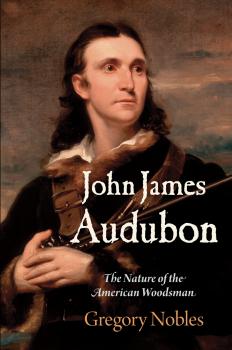Gregory Nobles
Список книг автора Gregory NoblesWhose American Revolution Was It?
The meaning of the American Revolution has always been a much-contested question, and asking it is particularly important today: the standard, easily digested narrative puts the Founding Fathers at the head of a unified movement, failing to acknowledge the deep divisions in Revolutionary-era society and the many different historical interpretations that have followed. Whose American Revolution Was It? speaks both to the ways diverse groups of Americans who lived through the Revolution might have answered that question and to the different ways historians through the decades have interpreted the Revolution for our own time. As the only volume to offer an accessible and sweeping discussion of the period’s historiography and its historians, Whose American Revolution Was It? is an essential reference for anyone studying early American history. The first section, by Alfred F. Young, begins in 1925 with historian J. Franklin Jameson and takes the reader through the successive schools of interpretation up to the 1990s. The second section, by Gregory H. Nobles, focuses primarily on the ways present-day historians have expanded our understanding of the broader social history of the Revolution, bringing onto the stage farmers and artisans, who made up the majority of white men, as well as African Americans, Native Americans, and women of all social classes.
John James Audubon
John James Audubon's The Birds of America stands as an unparalleled achievement in American art, a huge book that puts nature dramatically on the page. With that work, Audubon became one of the most adulated artists of his time, and America's first celebrity scientist. In this fresh approach to Audubon's art and science, Gregory Nobles shows us that Audubon's greatest creation was himself. A self-made man incessantly striving to secure his place in American society, Audubon made himself into a skilled painter, a successful entrepreneur, and a prolific writer, whose words went well beyond birds and scientific description. He sought status with the «gentlemen of science» on both sides of the Atlantic, but he also embraced the ornithology of ordinary people. In pursuit of popular acclaim in art and science, Audubon crafted an expressive, audacious, and decidedly masculine identity as the «American Woodsman,» a larger-than-life symbol of the new nation, a role he perfected in his quest for transatlantic fame. Audubon didn't just live his life; he performed it. In exploring that performance, Nobles pays special attention to Audubon's stories, some of which—the murky circumstances of his birth, a Kentucky hunting trip with Daniel Boone, an armed encounter with a runaway slave—Audubon embellished with evasions and outright lies. Nobles argues that we cannot take all of Audubon's stories literally, but we must take them seriously. By doing so, we come to terms with the central irony of Audubon's true nature: the man who took so much time and trouble to depict birds so accurately left us a bold but deceptive picture of himself.

